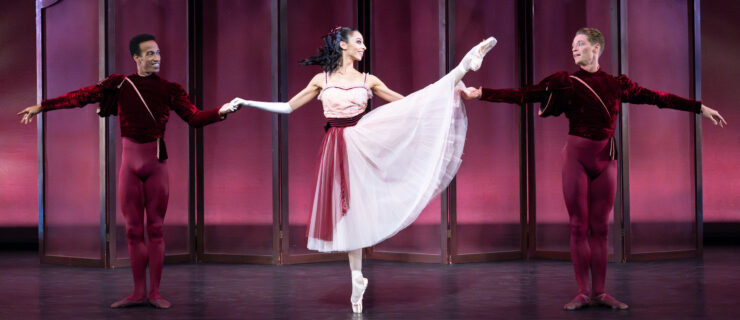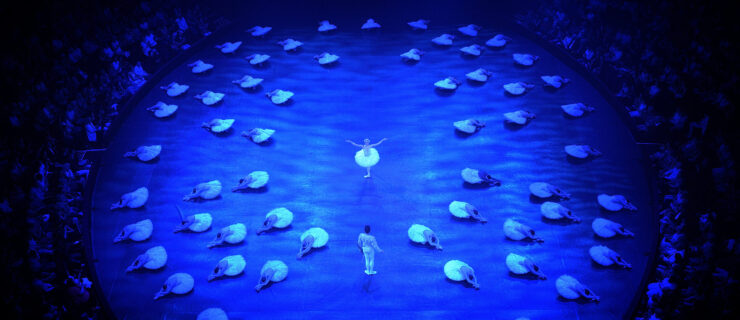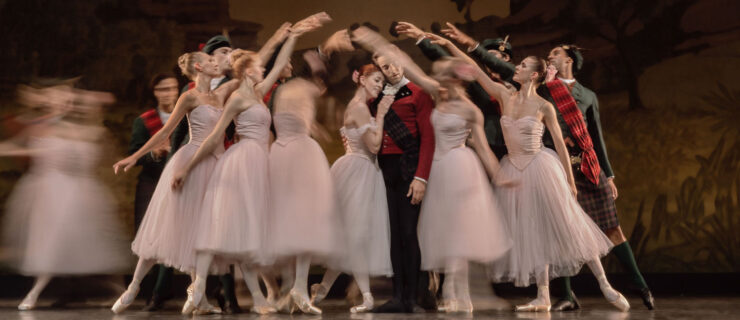Ask Amy: Whip Your Turns Into Shape
Have a question?
Click here to send it to Suzanne Farrell Ballet dancer Amy Brandt.
I know the basics of pirouettes—pull up, hold your core and connect your passé—but I’m still having trouble getting around and sticking my turns. Can you suggest any tips? —MaryCate
There are so many things to remember during pirouettes that it’s easy to feel overwhelmed, lose your mojo and start fearing them—which is turning suicide in my book. I’ve been taught some helpful imagery through the years. First, take a look at your passé position. As you spring to relevé passé, feel opposing energies running through your body: one energy pushing down into the ground through your supporting foot, with another rising up through your head—as if your body is being pulled taut like a rubber band. This will help you reach the full height of your position and stay better aligned over your supporting foot. Whether you’re turning en dehors or en dedans, engage your supporting leg’s turnout muscles to lock in the position as you rotate. Then, think of your pirouette as a spiraling corkscrew so that you grow taller as the turns progress.
One more hint: Connect your rotations with the musical rhythm, timing each spot of your head. Doing that always helps me to stop overanalyzing and start having fun.
I’ve had four patellar dislocations—one from a fouetté in class and others from movement like turning in bed to reach for my alarm clock. What causes this, and how can I stop it from happening again? —Danielle
Yikes! Dislocations are no joke. Your patella, or kneecap, is a floating bone encased within the patellar tendon. It has a groove that fits into a notch at the end of your thighbone, so it can slide up and down as you bend and straighten your knee. You could be experiencing one of two things: patellar subluxations (where the kneecap momentarily shifts sideways) or full dislocations (where the kneecap stays out and must be manually adjusted back in).
Jennifer Green, physical therapist and founder of PhysioArts, a New York City clinic for dance rehab, says the structure of your knee joint might make you more prone to dislocations. “If the kneecap’s groove is too shallow, the fit won’t be as good and there’s more room to slide,” says Green. The kneecap is held together by ligaments, and dancers tend to have looser ones. (While you can’t strengthen your ligaments, doing exercises for the muscles around the knee will make the joint more stable.) Muscular imbalances can also aggravate your knee.
See an orthopedic surgeon as soon as possible. Even if you haven’t experienced a full dislocation, frequent subluxations “can lead to a dislocation,” says Green, “so it’s important that you get care.” You’ll need physical therapy, and your exercise program will depend on your exam results. If it’s skeletal, your treatment may focus on correcting your alignment and technique, whereas a muscular imbalance will involve strengthening weak thigh and hip muscles, and lengthening tighter muscles. Don’t tackle this on your own! Make a doctor’s appointment before you experience further damage.
I’m in a regional ballet company that does a long Nutcracker run every year. I think I’m developing snowflake burnout. How can I keep my performances fresh and interesting? —Lauren
After a run of Nutcracker, I often wonder how Broadway dancers do it—eight shows a week for months or even years on end. True, it’s easy to feel a little stale after your 18th run of “Waltz of the Flowers.” But the worst thing we can do is phone in a performance—that’s when careless mistakes happen. Luckily, there’s always room for improvement, especially as you grow more confident in a role.
Try setting small goals for yourself to make the shows more interesting. Sometimes I focus on minute details, such as making tighter, faster bourrées or running more quietly. Play with your characterization; vary your facial expressions or gestures so you’re not giving cookie-cutter performances. Make eye contact with your cast mates for an energy boost. And it might help to imagine that there’s someone important in the audience—a dance critic, your parents, your secret crush—to help give your performance extra oomph.





